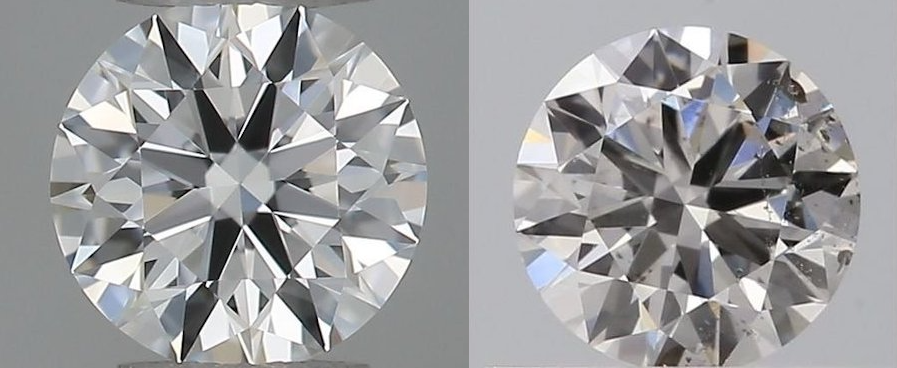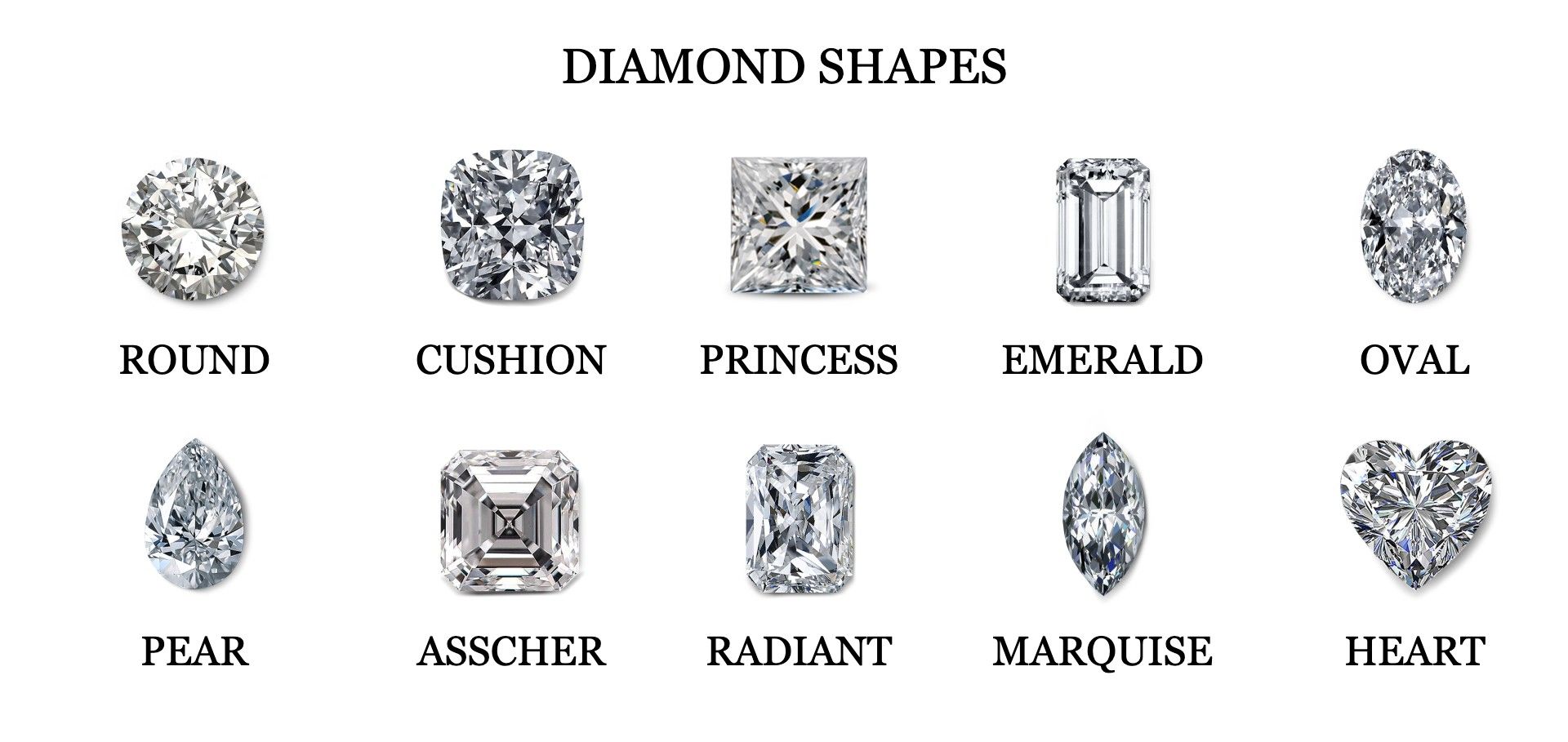Clarity Grades: VS1 and VS2 Diamonds

If you're looking for a diamond, VS1 and VS2 diamonds are a great choice. Learn more about these clarity grades here.
All About Diamond Clarity
Diamond Clarity Grading

To understand a diamond’s unique qualities, laboratories analyze them under controlled conditions using special tools. After this process, a laboratory report is created where at least four quality aspects are detailed: Color, Clarity, Cut, and Carat weight. Together, they are known as The 4Cs of Diamonds.
Each ‘C' in this quality system plays a determining role in diamond valuation.
Clarity describes the presence of impurities in diamonds. A stone will receive a specific Clarity grade depending on the amount, size, and location of these imperfections.
The Diamond Clarity Scale
The GIA originally developed the Diamond Clarity Scale in the late 1940s as part of the 4Cs of Diamonds which has become the standard method for diamond grading.

The Clarity Scale is divided into 6 groups with eleven possible scores. Grades go progressively lower from Flawless (FL) to Included 3 (I3).
Regardless of origin—earth-grown or lab-grown—diamonds can develop different kinds of clarity characteristics in their formation process. This is normal, and, in fact, not even Flawless diamonds are entirely pure and free of imperfections.
To assign a Clarity grade, diamonds are analyzed under 10x magnification. But if a diamond was viewed under 60x or 100x, despite having an FL or IF grade, you would still be able to observe impurities.
Inclusions And Blemishes
Diamonds can have two types of imperfections: inclusions or blemishes. Inclusions are internal imperfections and blemishes external imperfections. Inclusions occur naturally during the diamond formation process; blemishes typically occur during the cutting or mounting process. There are thirteen types of inclusions and nine kinds of blemishes.
Each diamond has a unique mix of inclusions and blemishes. In a way, they are a diamond’s fingerprint.
Learn More About Inclusions and Blemishes
What Is An “Eye-Clean” Diamond?

Clarity is better observed with a 10x loupe. Different clarity grades will look almost indistinguishable to the naked eye and in normal light conditions.
Sometimes, jewelers will describe some diamonds as being “Eye-Clean.” This informal term refers to Clarity grades that appear not to have impurities just by looking at them without any magnification tools. No specific range of grades is classified as “Eye-Clean” as this depends on the location and size of the inclusions and blemishes. For example, it’s possible for a Slightly Included 2 (SI2) graded diamond to look clean from a 6 inches distance and be considered “Eye-Clean” by most people.
VS1 And VS2 Diamonds
Very Slightly Included
VS1 and VS2 diamonds are the two grades in the Very Slightly (VS) included group.
The VS group describes diamonds with a minimal presence of inclusions and blemishes, typically only visible with a loupe.
What’s The Difference Between VS1 and VS2?

VS1 is higher than the VS2 grade. The only difference between the two is a VS2 diamond’s impurities can be easier to spot than those in a VS1.
Imperfections in a VS2 grade diamond are similar in size and quantity to those in a VS1. In many cases, it’s their location that makes them more visible, thus earning the VS2 grade.
Which VS Clarity Grade Should You Buy?
Spotting the difference between a VS1 and a VS2 diamond with otherwise identical Color, Cut, and Carat weight it’s challenging without a loupe. However, because of the higher Clarity score, the same hypothetical VS1 stone might be considerably more expensive.
Both VS1 and VS2 are fantastic clarity grades. They will look eye-clean to most people. If you have any concerns about possible visible inclusions, you can be safe with a VS1.
It's important to view HD imagery and videos of your diamond before purchasing it to make sure you love it. At Ritani, we offer Free In-Store Preview, which allows you to preview your desired diamond or completed engagement ring at no cost to you.
Learn More About Free In-Store Preview
VS1 vs. VS2: A Price Comparison
At the moment of writing, a 1.00 carat, Round cut, F Color diamond, VS1 with Very Good cut, can cost anywhere from $5k to $7k. The same search filters, only replacing Clarity with a VS2 grade, show a price range of $4,800-$6,200. This means you could potentially save a thousand dollars if you chose a VS2 clarity diamond instead.
How To Buy A VS Diamond
1. Earth-Grown or Lab-Grown?
Your first decision should be about the diamond's origin. Earth-Grown and Lab-Grown diamonds have the same optical, physical, and chemical characteristics. The first one took hundreds of millions of years to grow underground; the other was formed over months in a laboratory's controlled conditions.
Consider this: Earth-grown diamonds cost more but have a better resale value. Lab-grown diamonds are less expensive, allowing you to get a bigger stone or invest in better Color or Clarity grades. However, the resale value is typically lower as well.
2. Pick Your Favorite Diamond Shapes

Not many people are aware of this, but diamond shapes also influence price! The Round Brilliant Cut is considered to be the most expensive of all shapes. Be open to other gorgeous, sparkling cuts such as the Pear, Marquise, and Oval. These shapes also follow the Brilliant canon, meaning they offer excellent light return (aka brilliance, fire, and scintillation).
A bonus tip: Step-Cuts like the Emerald have less demand and lower prices. They might not be as flashy as Brilliant cuts, but they are stunning too!
3. Select a Carat Weight Range
Carats are perhaps the single most defining value factor of all. A slight change in carat weight can translate into hundreds or thousands of dollars. This goes both ways. If you want to save up, look for an 0.85-0.90 carat stone instead of a 1.00 carat; you will be amazed by the price difference! These stones will appear identical in size to a 1-carat diamond.
4. Consider Two or Three Color Grades
Slight changes in Clarity and Color grades aren't that visible. Consider two or three different color grades to compare prices. Going one Color grade lower can significantly impact price, allowing you to spend the difference on something more visible, like Carat weight or a Round shape. Near-colorless diamonds, like G or H, will face up as white but are much more affordable than colorless diamonds.


